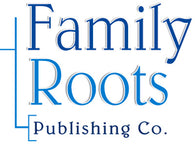
American Migration Routes Part I - Indian Paths, Post Roads & Wagon Roads - DAMAGED
American Migration Routes Part I - Indian Paths, Post Roads & Wagon Roads - DAMAGED; by William Dollarhide; 2022; 139 pp; Full Color Throughout; Soft Cover; DAMAGED; Perfectbound; 88 Maps; 77 Routes; ISBN 978-1-62859-335-8; Item #: FR0486-DAMAGED
Brand new, never read, but time on a warehouse shelf or at a conference has not been good to it. May have some damage to the cover; scuff marks mostly, but integrity still intact. No missing pages or anything that would compromise the readability, legibility or understanding of the text. May have minimal dings on the top or bottom of some pages.
As noted above, this all-new volume of American migration routes includes 88 maps and 77 routes - up from the 22 routes in the 1997 edition. This book has seven (7) chapters, each illustrating a specific era of American transportation history:
- Indian Paths to Post Roads (1630-1669)
- The King's Highway (1680-1765)
- Scots-Irish Wagon Roads (1720-1750)
- Trans-Appalachian Trails & Roads (1755-1796)
- Roads to the Ohio Country (1787-1818)
- Roads of the Old Southwest (1806-1832)
- Western Migration Routes (1821-1869)
A 12-page Table of Migration Routes acts as an introduction to the map chapters with road trips, notes, and links to historical references online. Each chapter starts with a locator map and introduction to the historic era.
The migration routes are then enlarged on two side-by-side maps: the left-hand page has the highlighted trace of a migration route on a modern highway map; the right-hand page has the same trace on a county boundary map.
For all states, the Modern Highway Maps were adapted from the USGS National Map and show a highlighted old migration route as part of the current State, US, or Interstate Highways. These maps were designed to enable a road trip that follows the trace of the old migration route. At each numbered migration route, an arrow symbol indicates the road trip directions necessary to repeat the journey today.
The County Boundary Maps were adapted from the USGS Base Map of the U.S. No. 2b East as well as various other base maps showing current state and county boundaries. The county boundary maps were added for genealogists and the researchers who need to know the place on the ground where their ancestors may have left records of an event, i.e., a birth, marriage, death, or burial. Finding the place of an event necessitates a discovery of the exact cemetery, town hall, or county courthouse where the records are found today.
